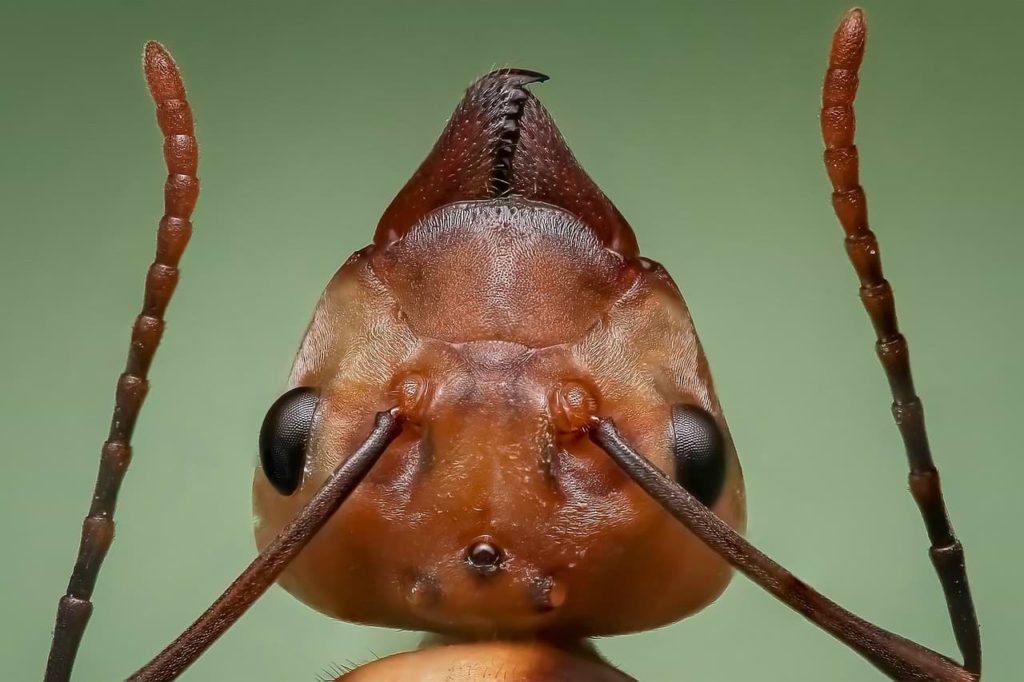What ants lack in size, they make up for it in numbers. While the population of ant colonies depends on the ant species, it is possible for colonies to grow so big that it can have thousands up to millions of ants and have colonies that go deep as tens of feet underground.
But among the millions of ants that can exist in any given colony, only one ant is important over everyone else: the queen ant. Not only is she the leader of the colony, but her survival is necessary because, without a queen ant, the colony would cease to exist.
How Ant Colonies Work
In any given ant colony, you have four different types of ants. First and most importantly, you have the queen ant. She is the founder and leader of the colony whose sole function is to lay thousands of eggs to ensure that her colony doesn’t die out. She is the biggest ant in her colony and has wings.
Second, you have drones, which are male ants whose sole function is to mate with the queen and then die. Third, you have the worker ants. These are the female ants responsible for feeding, foraging, and protecting the colony. All of the ants you see outside of its nest are female worker ants.
And fourth, you have winged males and females known as alates. These are the ants that will leave the colony together to establish new colonies. The winged females become queens in their own colonies, while the males serve as their drones.
The Queen Ant
Every queen ant is born an alate. At a certain age, she and many male alates will leave the colony to create a new colony. Once she has her own offspring, she becomes the queen ant of her colony and begins her primary function in life: reproducing the members of her colony.
While it is only one job, it is so vital that her death will definitely mean the end of the colony. This is why she is so well-guarded by her colony that her chambers are located as far away from the surface as possible to prevent predators from getting to her.
It is possible to have more than one queen in a colony. Super colonies that stretch for miles and go as deep as 25 feet underground can have multiple up to a million queens – this means multi-million ants co-existing together.
The average lifespan of an ant can span depending on their species and where they live. Some ants can only live for a few weeks, with one year as their maximum. An average black ant, for example, can live between 4 years up to 15 years assuming they aren’t killed by bigger predators. Their queen, however, can survive for up to 30 years. This is because she hardly ever leaves her chambers to go outside the nest and will more likely die of old age.
Identifying a Queen Ant
If you happen to come across an ant colony, you can easily identify a queen ant by her size. She is twice as big as all the other ants as her size allows her to produce eggs. She also has wings that make her appear even bigger.
What Happens When a Queen Ant Dies?
A queen ant ensures the survival of the colony because she is responsible for creating its members. Depending on her species, a queen can lay hundreds up to a thousand eggs a day. If a queen were to die, there would be no one to replace her (female worker ants cannot reproduce) and the colony will eventually die out. It won’t be an immediate end to the colony, but eventually, the population will slowly dwindle and die out since there is no queen to replace her lost numbers.
Death By Mutiny
In cases where there are multiple queens, some worker ants may try to turn on multiple queens so that only one queen remains. However, some worker ants can get carried away and end up killing all the queens, thus ending their own colony.
However, when something like this happens, queens are not going to go down without a fight. When a queen knows she is not the only queen in a colony, she produces fewer workers. This may seem like counter-productive as this means there are less ants in the super colony, but it’s actually quite strategic.
With fewer worker ants in the colony, a queen has less power and is more likely to be overwhelmed by the number of worker ants that will attack her. With less ants, she has more fighting power against the worker ants. It shows that, when they feel threatened by the numbers against her, a queen ant is willing to sacrifice the interests of the colony to save herself.
This comes at a price, however, especially when worker ants decide to kill queen ants. The more fertile and productive a queen ant is, the stronger her chemical odor for producing ants. Worker ants are more likely to spare the queen that produces the most ants for the colony and kill off those that do not produce as many eggs.
So, to answer the question of what would happen if a queen ant dies, the general answer is that the queen’s ant colony will die out if the only queen dies because there is no one to replace her. However, in colonies with multiple queens, some worker ants may try to kill their least productive queen ants. They may get a bit overboard with their mutiny, however, and may also end up killing all the queens in the colony, leading to their colony’s eventual extinction.



